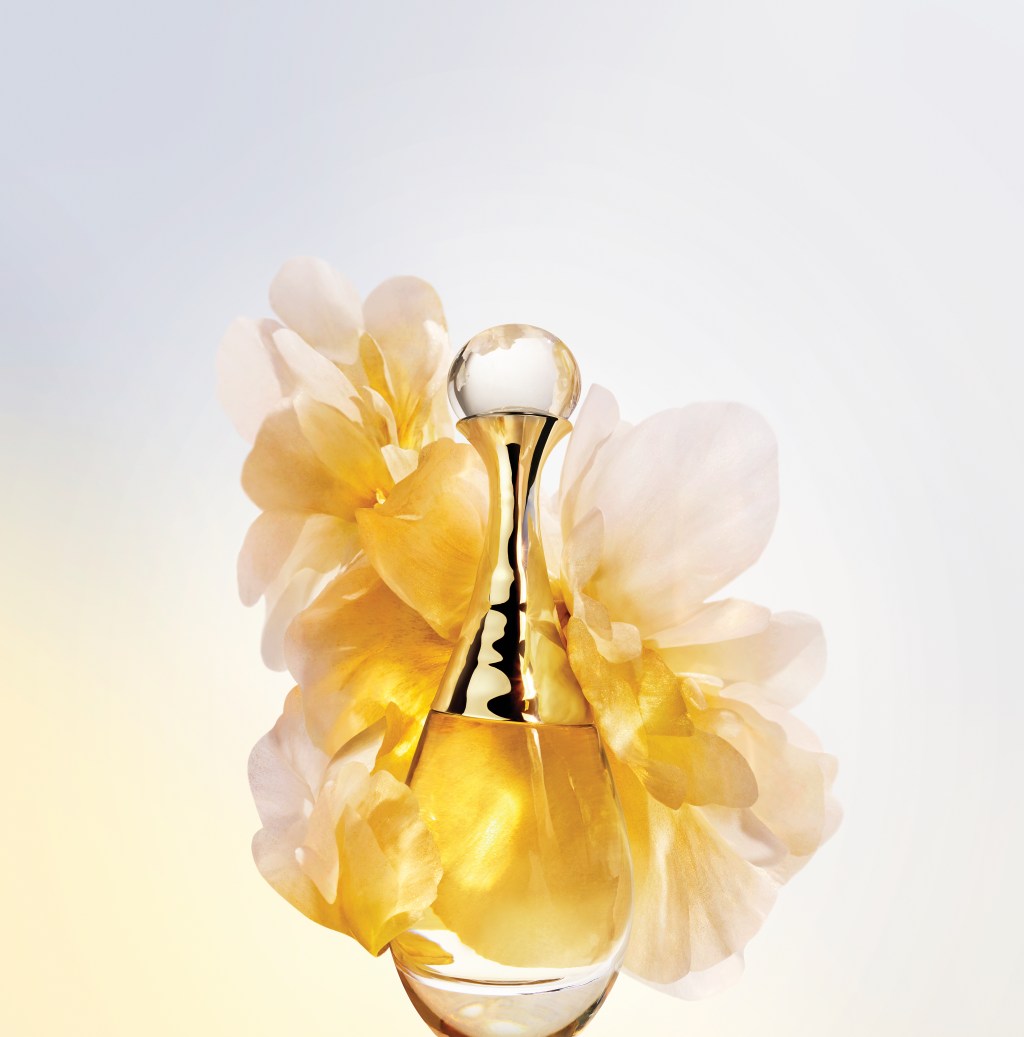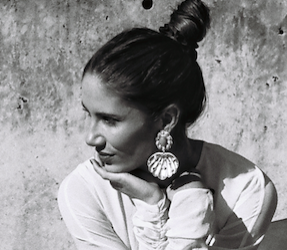News feed
Two bountiful bouquets sit atop a white coffee table inside Dior’s luxury, Haussmannian suite in Cannes; one delicate and neatly pruned, the other a floral profusion resolutely accented with more orange blossoms, more jasmine and more roses than the first.
It’s the month of May, a delightful and rather glamorous time to visit the Côte d’Azur, and catch a flick at the famous Festival de Cannes. From Dior’s suite on the sixth floor of Hotel Barriere Le Majestic, a 180-degree vista awaits; the cerulean Mediterranean to the left, the movie-star-punctured red carpeted staircase of the Grand Auditorium Louis Lumière – and its ensuing fanfare – to the right. And just as purposefully as Natalie Portman stepped into that vintage 1949 Dior gown for the premiere of her film May December this Cannes season, the aforementioned floral arrangements on the suite’s coffee table are, too, no accident.
Indeed, they symbolise Dior’s 24-year-old J’adore Eau de Parfum, and its new, updated version, L’Or de J’adore (which translates to ‘the gold of J’adore’), a scent crafted by the inimitable and world-renowned French perfumer Francis Kurkdjian. The new perfume creation director at Dior, Kurkdjian was tasked with dissecting the composition of J’adore’s universal bouquet, pruning it, and – like one would melt down gold – retaining only its purest ingredients. As the second bouquet shows, Kurkdjian zoomed in on the classic J’adore formula, and magnified particular flowers to create a new signature: brilliant, rounded, sensual, smooth, contemporary.
“The idea of these two bouquets is that they are very different. Here you will have the Eau de Parfum; little flowers, lots of colours,” Kurkdjian explains to GRAZIA, gesturing to the first bouquet. “And here you have L’Or de J’adore; bolder and more of a statement, in a way,” he continues, referencing the second.
“It was important for me to translate the [J’adore] story,” he adds, repeating questions in French to himself, before voicing his considered answers in English. “L’Or de J’adore is a new expression of J’adore. Maybe it’s the most precious one so far. J’adore is about the idea of gold, and [my team and I] started to think about the fact that to get the purest quality of gold, you have to melt it down. When you heat it up, its impurities evaporate.
“At some point, I asked myself, ‘What if I was to take the formula of J’adore and heat it up? What would happen to the unnecessary notes?’ Not the impurities, but the non-necessities. What would be left?”
To truly appreciate this new scent is to understand Kurkdjian’s background, and the great degree of precision in which he worked to unearth another classic for his new house. And, in foraging for gold within such a bouquet, Kurkdjian has experienced another career-defining eureka moment.

An Icon, Reborn
J’adore was released in 1999 and changed the perfume game forever. Under the watchful eye and nose of French perfume master Calice Becker, the resulting blend was so good, it didn’t smell like any one flower. You couldn’t tell if there was more jasmine than rose, or more honeysuckle than violet, or more lily of the valley than tuberose. This universal bouquet went on to become one of the best-selling fragrances in the world – and we all remember those slinky, golden billboard and television ads starring Academy Award-winning actress and forever muse Charlize Theron.
But what many may not know is Kurkdjian, now 54, actually worked at the same place as Becker in 1999 as she created J’adore. The pair were employed at Givaudan, a Swiss multinational manufacturer of flavours and fragrances.
“I learnt a lot from watching Calice,” says Kurkdjian. “[At the time] I was practising perfumery for only four years. I was looking at her and how she was taking her meetings, and doing the formula. To me, it was a way to learn things.
“One aspect that I kept [from working alongside Calice] was to never give up,” he adds. “She gave so much, and she made it. She wasn’t expected to win as there were so many amazing perfumers. She’s a little Russian descendent – strong, tough, rough – she’s something. So, never give up.”
After that, Kurkdjian went on to craft olfactory delights for the likes of Dior, Jean Paul Gaultier, Elizabeth Arden, Yves Saint Laurent and Burberry, and in 2009 co-founded his eponymous brand Maison Francis Kurkdjian, which of course is renowned for its cult offering Baccarat Rouge 540.
In 2021, Kurkdjian’s new appointment at Dior was announced, a title he now holds in addition to being at the helm of his own brand.
“You need to be recognisable as a scent,” Kurkdjian begins, explaining how a cult product is born. “Fragrance is always related to beauty, but it’s not a beauty product; it’s not a nail polish; it’s not mascara; it’s not a lipstick, it’s invisible. You can look at a face and say, ‘Oh you have a beautiful lipstick.’ But if your perfume dies after one or two hours, no one is going to notice it. So, you are spending several hundreds of euros for whom? For yourself in the morning? Fine. But to me, the most beautiful compliment is when someone comes to you and says, ‘Excuse me, madame, you smell beautiful.’
“You don’t put a perfume on a shelf and it becomes iconic, it doesn’t work that way,” he continues. “It’s a lot of work to nurture [a future icon]. There are many ways to do it. You can have new muses or change the shape of the bottle. But you have to work on it, you have to make it happen. Because just making a hit? It’s not enough. You need to have the statement signature, the technique, and the brand to support it.”

Mining For The Gold Of J’adore
Kurkdjian and his team at Dior worked hard on deconstructing J’adore’s formula, playing with scent proportions, and pronouncing only its “necessary” ingredients. The perfumer says he had 125 modifications and believes if there wasn’t a deadline to get it all completed, he would simply “keep going on, and on, and on.”
“You know [you’ve reached the final composition] when the guy who is the timekeeper tells you it’s time to give the final formula to the factory,” he shares, jovially.
“I had a goal each week to achieve,” he continues. “One week I would say, ‘This week it’s not strong enough.’ The week after, it might be, ‘Oh, but you lost the creaminess, and virility.’ So that week is about keeping the strength, but addressing the virility, boldness, and rawness etc.
“And the closer you are to the end of the project, it’s about fine tuning. It’s like a watch. You change the name, you change the wording, you put the comma somewhere else. It’s about high precision.
“The very, very last step is usually almost untouchable,” he adds. “You feel it, but you can’t smell it. It’s about the feeling… At some point, the perfume is set up, and you start to forget the concept because it becomes an emotion.”
Interestingly, the most challenging part of Kurkdjian’s role is ensuring a scent lasts on the skin for many hours. According to the nose, you could have every other part of the perfume puzzle perfect – and then the scent doesn’t last.
“The most difficult challenge, even now, is to get the long-lastingness. That’s horrible,” he says, laughing. “There is no machine, or artificial intelligence that can tell you what to do… That question about long-lastingness, projection and sillage, to me, is the worst thing ever because if you don’t get that, it cannot be a success. For sure you fail. For sure, for sure, for sure. I could bet on it.
“Sometimes, I could cry in the morning when I wake up because I have to fix it and I don’t know how to fix it. It’s very upsetting,” he continues. “It leads you to frustration because you have the idea, the picture of the story, everything should be fine–but for that damn long-lastingness. It’s very tricky to fix it properly.”

An Evening In Provence
This same day, Kurkdjian invites GRAZIA to Château de La Colle Noire, the home Christian Dior bought in 1951 and stayed until his untimely passing six years later. He was 52. Here, in Provence – just north of Montauroux in Grasse – the sprawling château overlooks hectares of land originally cultivated for fragrant flowers and fruit harvests.
Christian Dior Parfums bought the estate in 2013, about the same time the Maison was opening a new perfume laboratory in Grasse. Designers spent three years restoring the garden to how Mr Dior envisaged. They used photographs to replicate what he would have wanted: lily of the valley and tulips; almond, cherry, apricot and olive trees. There’s even a field of 1,000 rose bushes and a 40-metre pond.
Kurkdjian, well-suited and working the influential crowd, charmingly asks guests about their own lives; where they are from, what they do for work, their travel plans, their families. Every so often, however, his gaze shifts to the evening light pattering the paddocks in the distance.
“Part of the process that is very specific to Dior is that the inspiration can come from the garden,” he says. “I tried to understand what Mr Dior was thinking when he was working. The thing that I smelt in the fields during a harvest season that I will use for a [future] perfume, is truly transpired from that moment in that garden. Is that something I could have done from my own house? Never. Never ever.”
Looking To The Future
The perfumer has some interesting views on the future of wearable sensory technology, and electric transfer of scents – realities he believes are not too far away from fruition.
“My new thing is about having a chip in your head. This is my obsession,” he says. “How would it work? Basically, your nose is just a transmitter. You don’t have to smell through your nose. The smell has to go through your nose, but you smell in your head. Take, for example, your eyes. When you look at something using vision, the eyes are just the transmitters, and then your brain helps you to decode what the signal is.
“I believe that we could have a chip [in our brains] and download data,” he reinforces. “Basically, you could buy the smell of L’Or de J’adore and instead of smelling it through your nose, you will have a signal [in your brain].
“I’m sure we’re going to go there. Very fast, too.”
While Kurkdjian’s theory is entirely plausible – could we be downloading L’Or de J’adore in our brains in years to come? – it’s almost unfathomable to think anything could replace the ritual of smelling a fresh bouquet of flowers. In a suite in Cannes, in Mr Dior’s garden in Provence, or otherwise.
At least for those in between moments, the gold is now bottled. Eureka, indeed.
Dior’s L’Or de J’adore is available TO SHOP now.
CREATIVE DIRECTION: DANÉ STOJANOVIC
PHOTOGRAPHY: EFRAIM EVIDOR
THIS FEATURE IS PUBLISHED IN THE 15TH EDITION OF GRAZIA INTERNATIONAL. ORDER YOUR COPY HERE.










